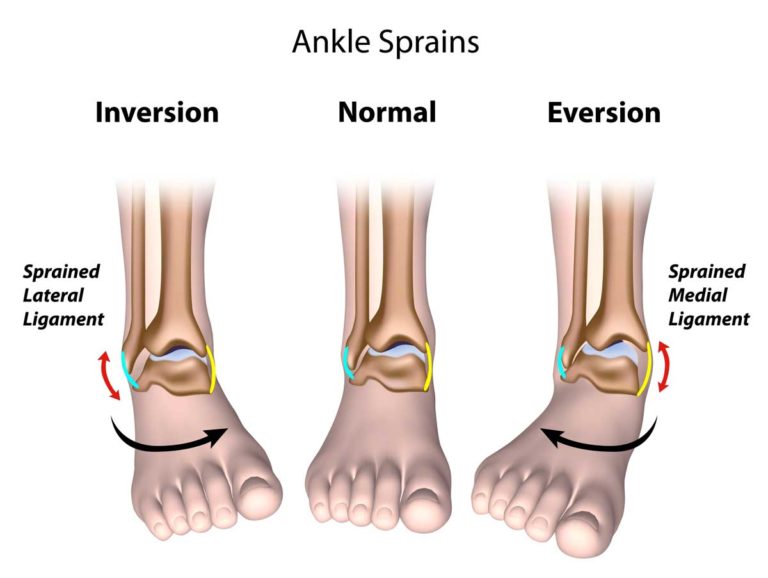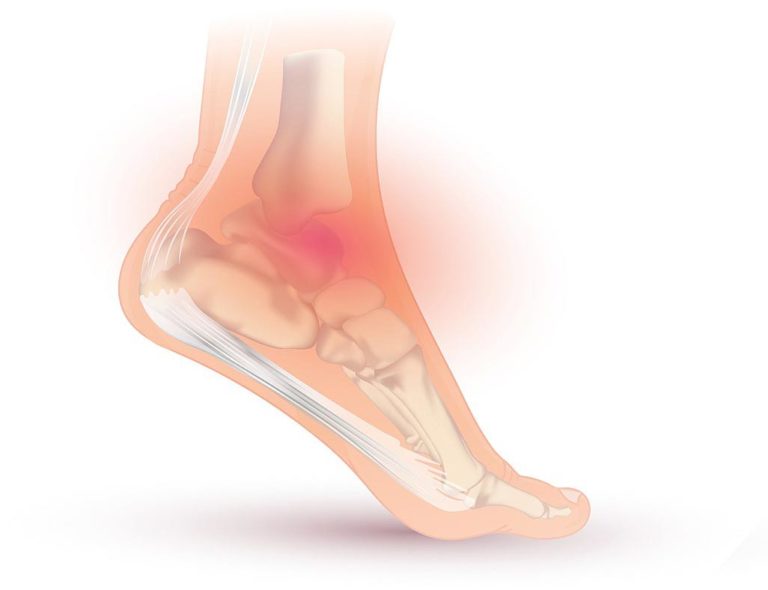Rehabilitation Exercises Post Ankle Sprain
What is it?
Ankle sprains, in particular around the lateral (outer) aspect, are common in sports. It usually occurs following a forced inversion (inward) movement of the ankle.
What does it involve?
Start by avoiding activities and movements that increase pain during the first few days after injury. During this period, elevate the ankle regularly. The use of elastic bandage, taping or compression sleeve to reduce swelling can also be helpful.
If necessary, offload your leg with the use of crutches.
Here are some simple exercises you can start with immediately post ankle sprain. Ensure that these exercises are pain-free.
1. Range of motion
- Trace the alphabets A-Z with your foot, which encourages ankle movement in all directions
- Sit on a chair and place your foot on a ball, move the ball around to encourage ankle movement in all directions
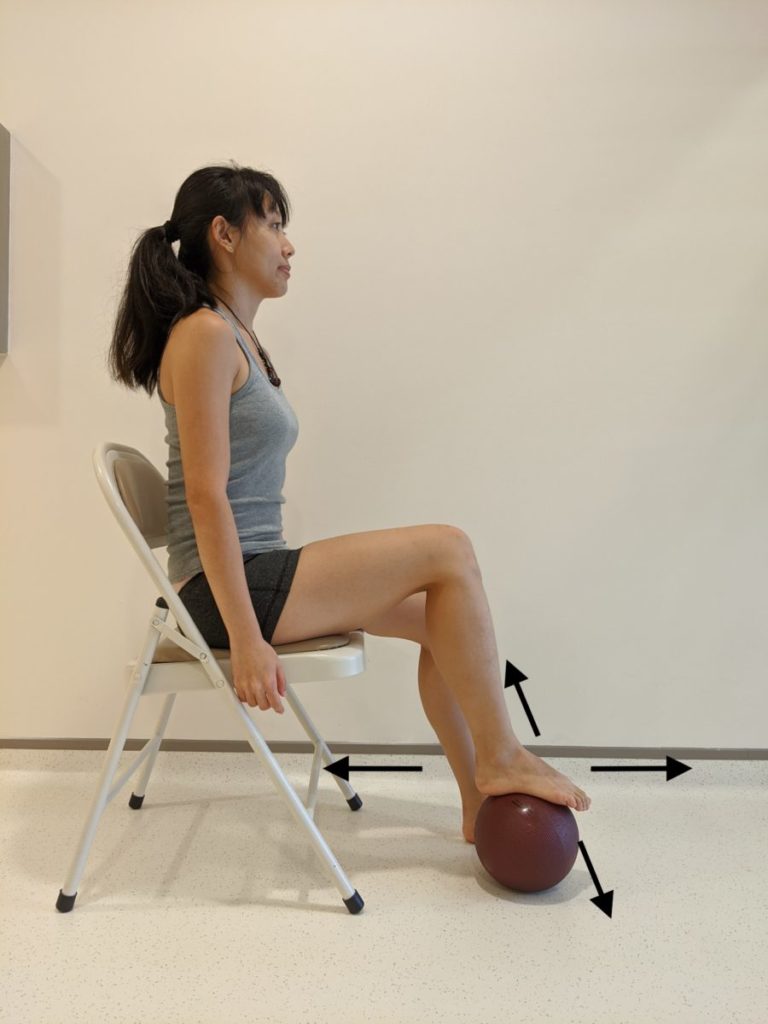
2. Isometric Strengthening
The following exercises are encouraged to be done multiple times per day, and 5x 30-45s hold each time.
- Isometric ankle eversion: Sit with the little toe of the injured foot against the wall. Gently press the outside of your foot into the wall and hold for 30-45s.
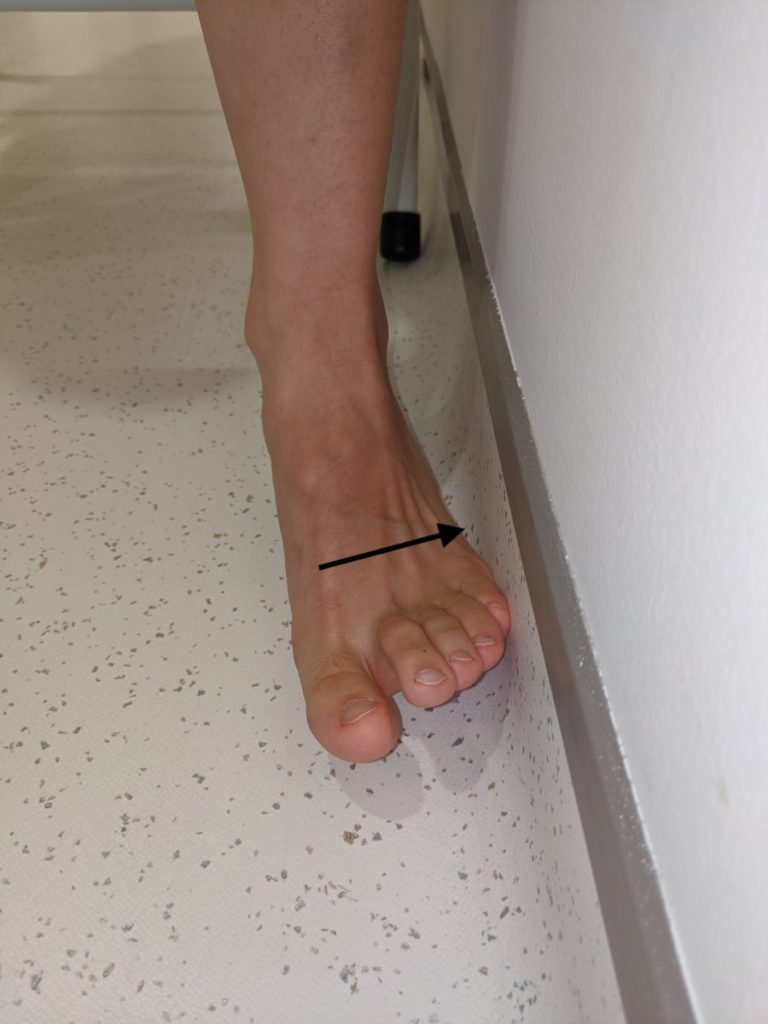
- Isometric ankle inversion: Sit with your feet together. Gently press the inside of your foot towards each other and hold for 30-45s.
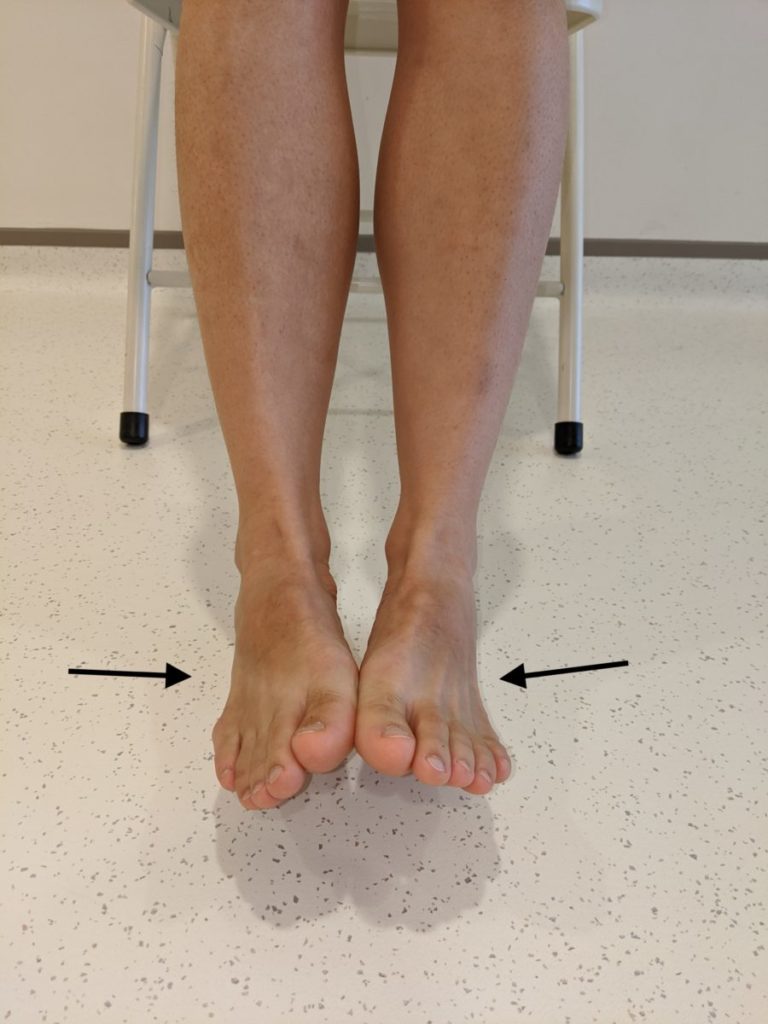
- Isometric ankle plantarflexion: Begin sitting upright with your involved leg straight forward and bottom of the foot against the wall. Gently press the bottom of your foot into the wall and hold for 30-45s.
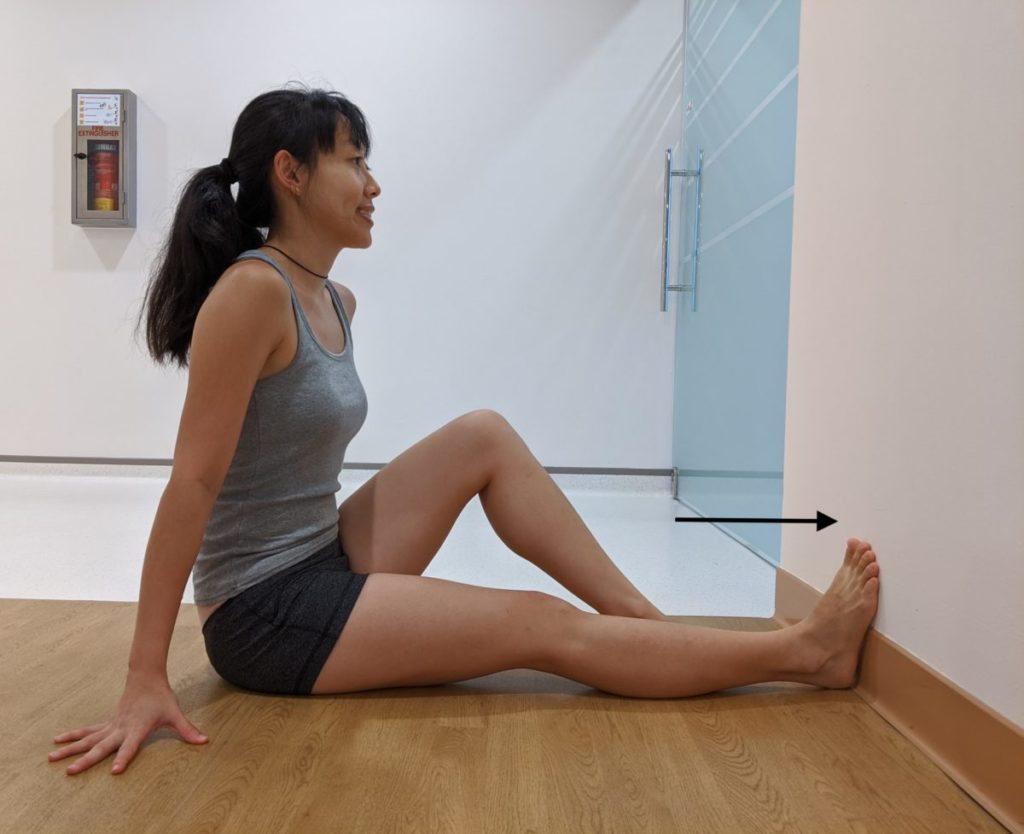
- Isometric ankle dorsiflexion: Place the non-injured foot on top of the injured foot. Gently push your non injured foot into the injured foot and resist by bringing the bottom foot up towards you. Hold for 30-45s.
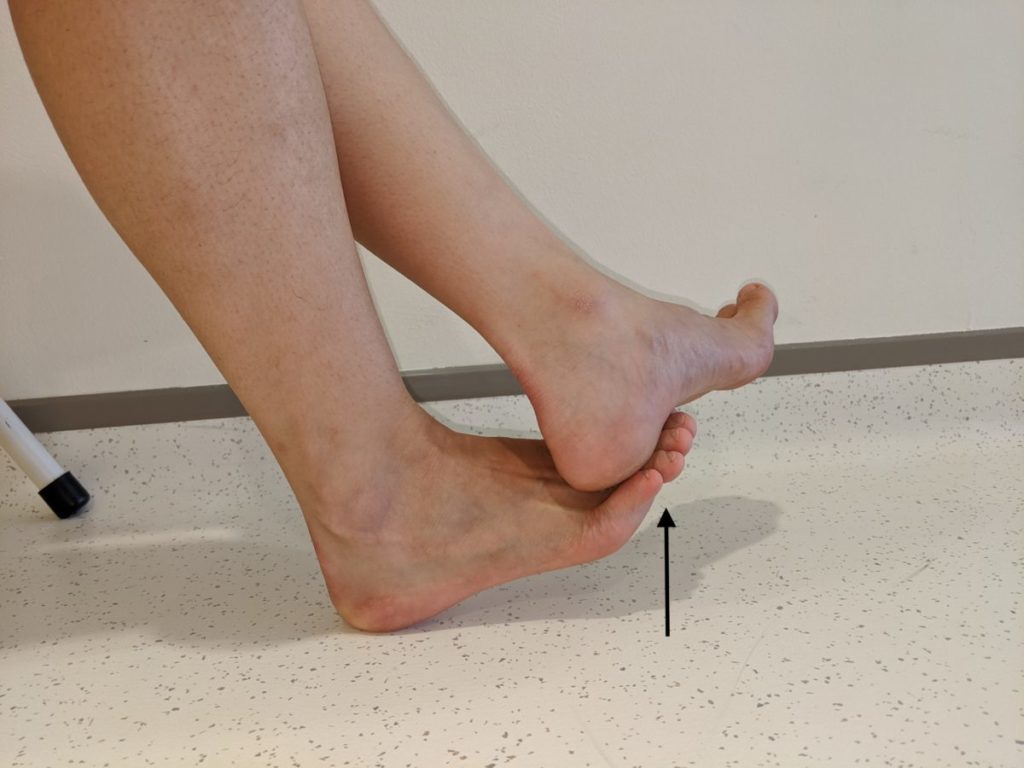
3. Proprioception
The following exercises are encouraged to be done multiple times till it feels easy for you.
- Weight shifting exercise: Position your feet shoulder width apart with equal pressure on both feet. Then gradually shift your weight to the injured side and hold for 5-10 seconds.
- Tandem stance: Place one foot in front of the other foot and adopt a heel-toe position. Maintain your balance for up to 30s.
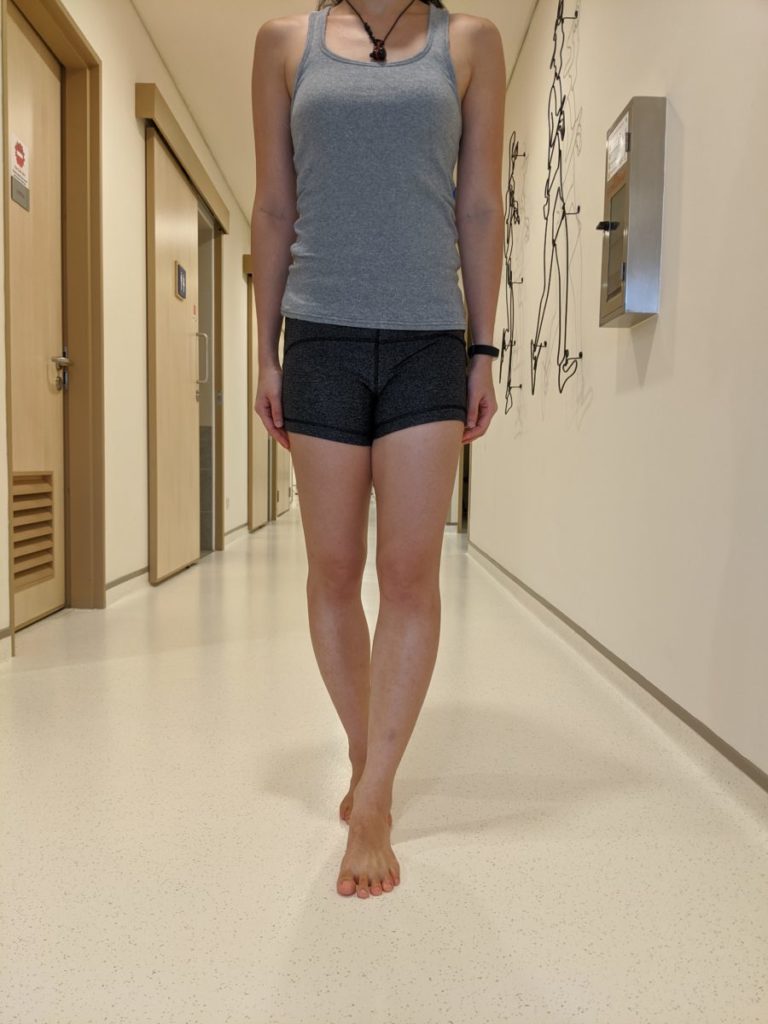
- Single leg stance: Stand on your injured foot and maintain your balance for up to 20-30s if possible.
What can be treated?
Rehabilitation is essential after an ankle sprain as it helps to reduce the recurrence of ankle sprain and optimise your performance in sports with:
- Reduction of pain and swelling
- Gradual increase in activity level, guided by symptoms
- Improving foot and ankle function in terms of range of motion, stability and motor control
What are the benefits, risks, and side effects?
There are very few risks and side-effects associated with rehabilitation exercises to treat your symptoms. At most, there may be a temporary flare of the symptoms, due to re-activation of areas that have been offloaded due to pain or other limitations.
The key benefit is that rehabilitation can help with recovery of function and return to normal activity in a conservative way, which may or may not require the addition of other treatments. This forms the core to your recovery.
What do I need to do afterwards?
It is imperative that you continue to do the exercises as regularly as possible and attend your follow up appointments if provided. This enables the physiotherapy team to monitor your progress and adapt your exercises to your individual needs.
What are the common misconceptions?
It is often expected that once you attend a physiotherapy session, that your symptoms will improve without further input. In most situations this is not the case and it requires you, as a patient, to be pro-active in your rehabilitation.
If you feel that your symptoms are not improving, or are worsening (such as locking or instability of the ankle), and you have tried the above, it would be good to have your problem assessed as soon as possible.
Visit your sports medicine team for a detailed assessment with your specialist physicians and physiotherapists. Together, they can help investigate and develop a rehabilitation plan that is specific for you and your sport, and advise on methods to gradually load the ankle.
